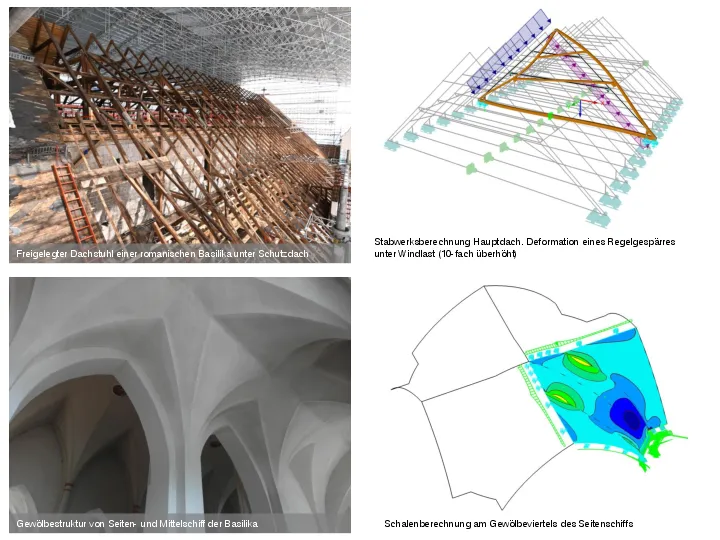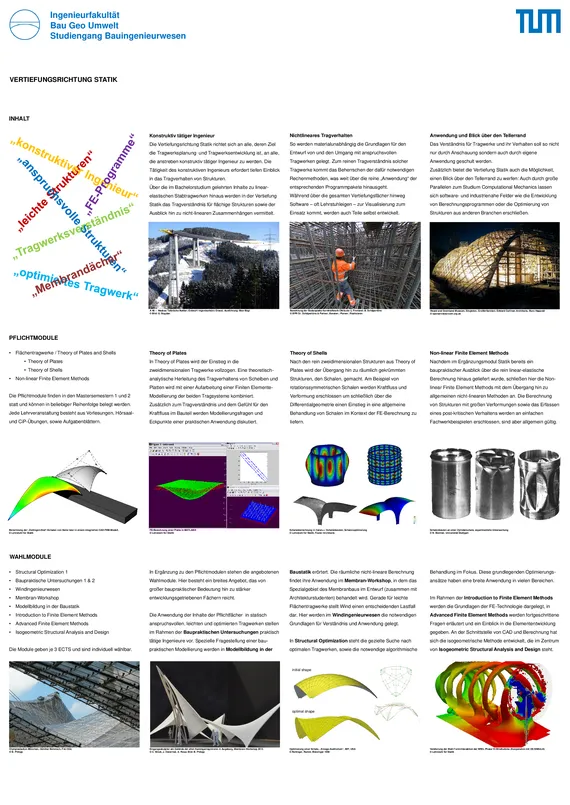Master's program in Civil Engineering - Specialisation Structural Analysis
In the Master's program Civil Engineering, the Chair of Structural Analysis proposes the following courses in the specialisation in structural analysis:
Compulsory modules
- Theory of Plates (Part 1 of the module Structural Analysis of Plates and Shells BGU32027D2) *
- Theory of Shells (Part 2 of the module Structural Analysis of Plates and Shells BGU32027D2) *
- Introduction to Finite Element Methods (Part 1 of the module Finite Element Method BGU32028) *
- Nonlinear Finite Element Methods (Part 2 of the module Finite Element Method BGU32028) *
Elective modules
- Structural Optimization 1
- Structural Wind Engineering
- Membrane-Workshop
- Modelling in structural analysis
- Advanced Finite Element Method
- Isogeometric Structural Analysis and Design
- Investigations in practical structural analysis
- The Finite Element Method for Fluid-Structure Interaction with Open-Source Software
- Computational Design and Fabrication
- Student projects
- new in summer 2024: Analysis and Calculation of Historical Load-bearing Structures
The descriptions to the modules can be found at TUM-Online, all course-materials and the course's organisation take place on the Moodle-platform of the TU München.
Note: most of the courses with the signature * are only held in English. For further information, please consult the module description.
Lecture materials for all courses are distributed via Moodle or this website by the Chair of Structural Analysis.
New in summer 2024: Analysis and Calculation of Historical Load-bearing Structures
Lecturers: Dr.-Ing. Joram Tutsch und Dipl.-Ing. Mark Böttges
The module focuses on the static modelling, analysis and evaluation of historical wide-span structures such as roofs, vaults and ceilings in timber, masonry, iron and reinforced concrete.
By visiting a historical building in Munich interesting structural issues will be discussed on site and be transferred into specific modelling tasks. These tasks will include large-scale global models, partial sub-models and constrution details.

